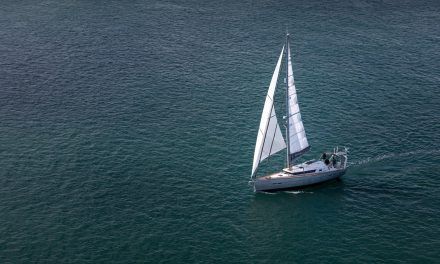Introduction.
Any sailboat, unless it is of a very small length, needs an engine. The most common is to install an inboard diesel engine, as they are very reliable and safe to work in a marine environment, present fewer risks than a gasoline engine, and have low consumption.
In small sailboats, of less than 7 / 8 metres in length, it is usual to have an outboard engine. On the other hand, electric motors are gradually making their way into the world of sailing, as new technologies are developed, and are increasingly being installed in modern sailing yachts.
There are several factors to consider when choosing an engine for a sailboat. On an ocean-going yacht, for example, it is important that the engine is of an internationally recognised brand, so that it is easy to find spare parts and mechanics anywhere in the world can repair a breakdown.
One of these factors to consider when choosing or evaluating an engine, perhaps the most important, and which we will look at in this chapter, is the power required by the engine.
On board a sailing boat, although the main propulsion is normally provided by the sails with the force of the wind, we will use the engine for many reasons, among which the following stand out:
– For port arrivals and departures, the engine facilitates docking and undocking manoeuvres.
– When the wind is calm or very light, I will use the engine to make transits to the port we are heading for.
– In certain situations, it will be in our interest to sail in mixed mode, that is to say, under sail and with the engine at the same time.
– On a long sail, I can use the engine for several hours a day to charge the batteries via the alternator attached to the engine.
– In bad weather, the engine can provide me with sufficient speed to steer the boat efficiently on a proper course with respect to the sea.
– If I find myself in a compromising situation, e.g., tacking towards land, the engine can allow me to steer away from a dangerous leeward shore.
All these uses of the engine impose different requirements. While, for example, for manoeuvring in harbour and docking, an underpowered engine may be sufficient, for steering the boat in very bad weather, the power requirements are higher.
The needs of a racing boat, where weight is a key factor, are also different from those of a cruising yacht. In addition, an ocean cruiser requires a more powerful engine to be better prepared for bad weather situations, especially in remote locations.
In this new chapter of the online book ‘BUYING A SAILBOAT’, we will see some general considerations that can help us to estimate the recommended power for the engine of our sailboat.
Efecúe Log In para desbloquear.Este contenido solo está disponible para subscriptores de navegantesoceanicos.com






